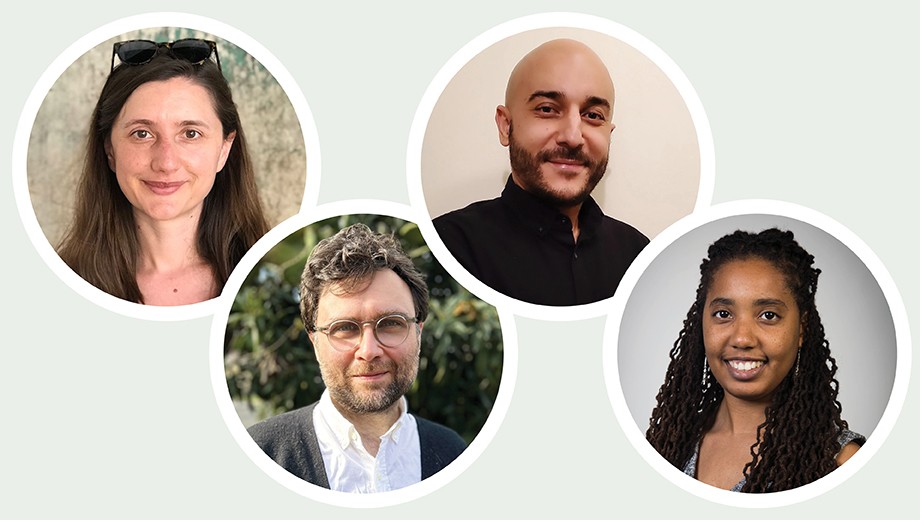In “Romance and representation,” Tableau discussed the research of four Romance Languages and Literatures junior faculty members. Here they share their favorite texts and methods to use in the classroom.
Noel Blanco Mourelle first became interested in the literature of medieval and early modern Iberia through verse, including the mystical poems by Ramón Llull, the subject of his current book project. Blanco Mourelle often finds such texts to be “more approachable” than Llull’s logic machines, and a better tool for teaching close textual analysis. Along with the medieval technologies he studies, Blanco Mourelle notes that studying mystical poetry and the intersection between religion and intellectual life helps him challenge preconceptions students may bring to the classroom about medieval Iberia. He notes that well-known religious wars and the Inquisition “are certainly truth, but they’re not exactly the full picture.” Works like Llull’s Book of the Lover and the Beloved and the poems of St. John of the Cross can also help students understand “religious dissident practices” in the Middle Ages.
Khalid Lyamlahy, too, sees poetry as an important tool, for helping students understand the history and culture of North Africa. He acknowledges that some find the genre intimidating. But “once we get inside,” he says, “and once we get the cultural context, it becomes very interesting.” The provocative Moroccan poet Mohammed Khaïr-Eddine, for example, had “a weaponized conception of literature,” Lyamlahy explains. Khaïr-Eddine was Amazigh—a term describing the Indigenous populations of North Africa—but wrote in French, sometimes using words that he invented or borrowed from jargon associated with plants and animals. He saw his work as “doing violence to the language and breaking with literary conventions in order to invent a new language.” Such subversive work comes alive when read within the context of cultural decolonization.
Pauline Goul notes that her students are often surprised by how close the concerns of French Renaissance thinkers feel to those of our own time. Her favorite texts to teach are Montaigne’s “Of Cannibals”—in which Montaigne condemns Europeans for calling Indigenous peoples in South America “barbarians” and suggests it is the Europeans who are truly barbaric—and a counterpart, “Of Coaches,” which explicitly condemns the European conquest of South America. Goul says the essays show “how different his thinking was from the status quo.” She has enjoyed teaching these essays with an unexpected pairing—the Mexican movie drama Even the Rain (También la lluvia, 2010). It follows a fictional film crew working in Bolivia on a period piece about the Spanish conquest of South America. As the project progresses, members of the crew become entangled with the Cochabamba Water War, protests from 1999 to 2000 against the privatization of the municipal water supply in Cochabamba, Bolivia.
When Danielle Roper teaches about the politics of impersonation, she leads with broad questions about the power dynamics involved: “You think about subjection; you think about resistance; you think about the spaces of ambivalence.” And before studying individual examples of racial performance such as cartoons or television clips, Roper facilitates challenging conversations. “To have a conversation about impersonation,” she says, “you actually have to know what the stereotypes of different racial groups are. So we had to have a basic conversation about what is a stereotype and what’s the work of a stereotype.” The difficult conversations have paid off: “I was moved by the fact that … students began to really think about their own positionality—as a White person, as a Latina, as an Asian American person. It’s a privilege to be a part of this journey as students start to grapple with, ‘Where do I fit in relation to the dynamics of race that we’re talking about in this class. Who am I?’”

